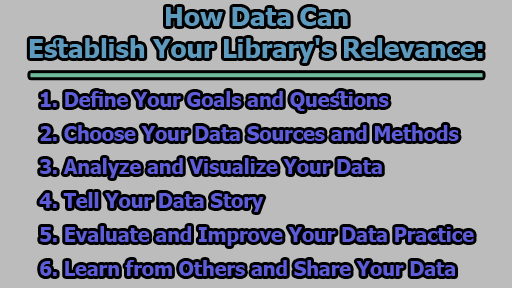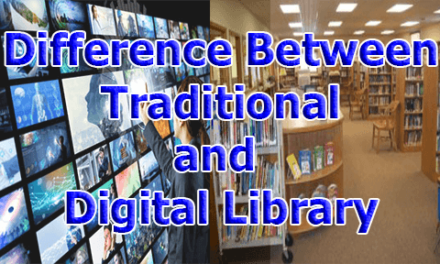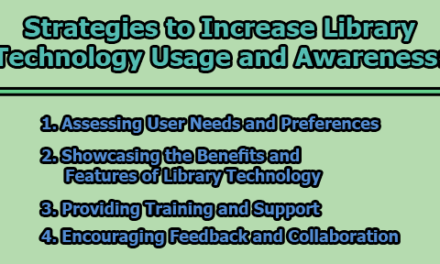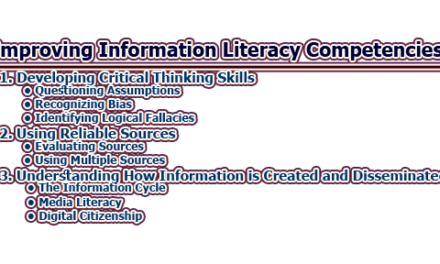How Data Can Establish Your Library’s Relevance:
In an age where libraries face increasing scrutiny and competition for funding, the ability to demonstrate their value and impact is paramount. Data is a powerful tool for achieving this goal, providing concrete evidence of the library’s contributions to its stakeholders, funders, and users. In the rest of this article, we will explore how data can establish your library’s relevance to collect, analyze, and communicate data effectively to showcase your library’s achievements, identify areas for improvement, and advocate for your library’s needs.
1. Define Your Goals and Questions: Before embarking on any data collection endeavor, it is crucial to have a clear understanding of your library’s mission, vision, and strategic priorities. What are the specific outcomes and goals that your library aims to achieve? By aligning your data efforts with your library’s overarching objectives, you ensure that your data is relevant and meaningful.
Identify the questions you want to answer with your data. How do you measure your library’s performance and outcomes? What are the expectations and interests of your target audiences? Defining your goals and questions enables you to direct your data collection efforts with purpose and precision.
2. Choose Your Data Sources and Methods: Depending on your objectives, you can select various data sources and methods.
Quantitative data, such as usage statistics, surveys, and benchmarks, can measure the volume, frequency, and satisfaction of your library services. This type of data provides numerical evidence of the library’s impact.
Qualitative data, including interviews, focus groups, and stories, can capture the depth, diversity, and impact of your library services. These methods provide insights into the personal and emotional experiences of users. A combination of both quantitative and qualitative data offers a more comprehensive and balanced view of your library’s services.
3. Analyze and Visualize Your Data: Once data is collected, effective analysis and visualization are essential to make sense of it and communicate it persuasively. You can employ various tools and techniques for data analysis, such as descriptive statistics, inferential statistics, or thematic analysis, depending on your data type and research questions.
Visual representation of data through charts, graphs, maps, or dashboards can enhance your data’s accessibility and impact. Choose the most suitable format to present your data, taking into account your audience and purpose. Clear and engaging data visualization can convey complex information in an easily digestible manner.
4. Tell Your Data Story: Data alone is insufficient to prove your library’s relevance. You must craft a compelling and convincing narrative that connects your data to your goals and questions. Your data story should highlight your library’s achievements, challenges, and opportunities. It should explain data insights and implications, providing recommendations and actions for your library and stakeholders.
Tailor your data story to your specific audience, context, and channel. Whether you are creating a report, a presentation, or a social media post, adapt your storytelling to resonate with your intended audience. A well-crafted narrative can transform data into a persuasive argument for your library’s importance.
5. Evaluate and Improve Your Data Practice: Data collection and analysis are ongoing practices that require continuous evaluation and improvement. Monitor the effectiveness and impact of your data efforts, seeking feedback and input from your stakeholders, funders, and users. By involving them in the process, you can ensure that your data products and services align with their needs and expectations.
Identify and address any gaps, challenges, or issues that may arise in your data practice. Regular evaluation and improvement will help maintain the accuracy, reliability, and relevance of your data, ensuring that it remains a valuable tool for demonstrating your library’s impact.
6. Learn from Others and Share Your Data: Finally, remember that data is not only a means to prove your library’s relevance but also a valuable resource for learning and sharing knowledge. Explore the data and best practices of other libraries and organizations with similar goals and questions. Learning from others can help you refine your data collection and analysis techniques.
Simultaneously, contribute to the data and learning community by sharing your own data and insights. By sharing, you not only enrich the collective knowledge of library professionals but also enhance your own data skills, expand your network, and bolster your library’s reputation.
In conclusion, data is a potent tool for libraries to prove their relevance and impact. By defining clear goals and questions, selecting appropriate data sources and methods, conducting robust analysis and visualization, crafting compelling data stories, and continuously evaluating and improving data practices, libraries can use data effectively to advocate for their needs and demonstrate their value to stakeholders, funders, and users. Additionally, participating in the broader data community can further enrich the library’s data capabilities and contributions.

Former Student at Rajshahi University










